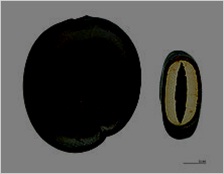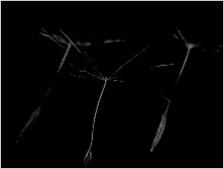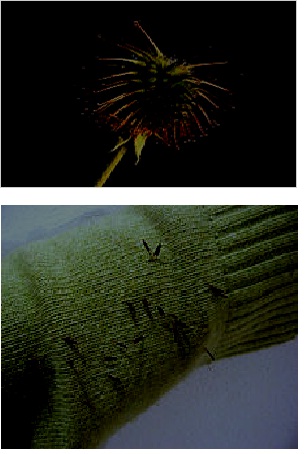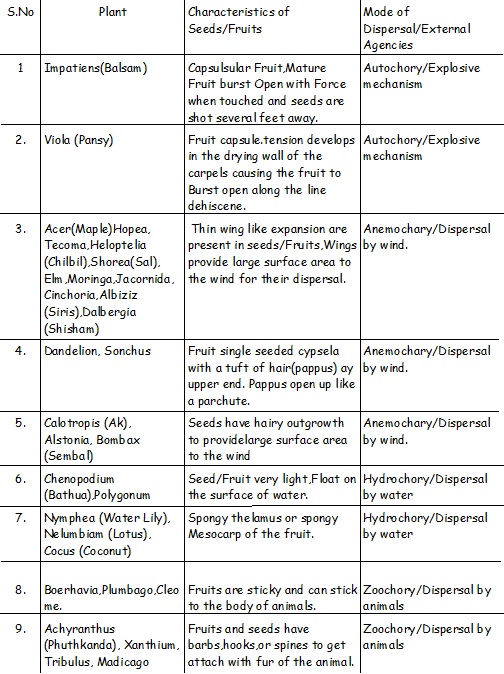





Published on Feb 13, 2025
The Process of scattering of fruits and seeds to distant places away om their parent is caalled dispersal on dessemination. It provides the new palnts better chances of obtaining water, nutrients, lights and space thereby enabling them to have a better start in Life.
The fruits and seeds develop many devices for better dispersal through different agencies.
The principle agencies that aid in the dispersal of fruits and seeds are wind (anemochary), water (hydrochory) and animals including man (zoochory). Besides, some plants show self dispersal by explosive mechanism (autochory). The dispersal through the agency of animals in consideredas the best and most successful method. Dispersal thorugh agency of animals is considered as the best and most successful method.Dispersal of seeds and fruits is quite Intresting subject of natural phenomenon and hence the study of dispersal of seeds by various agencieshas been selected for the present project.
Seed dispersal is likely to have several benefits for plant species.
1. Seed survival is often higher away from the parent plant. This higher survival may result from the actions of density-dependent seed and seedling predators and pathogens, which often target the high concentrations of seeds beneath adults. Competition with adult plants may also be lower when seeds are transported away from their parent.
Seed dispersal also allows plants to reach specific habitats that are favorable for survival, a hypothesis known as directed dispersal. Male bellbirds perch on dead trees in order to attract mates, and often defecate seeds beneath these perches where the seeds have a high chance of survival because of high light conditions and escape from fungal pathogens.
2. In the case of fleshy-fruited plants, seed-dispersal in animal guts (endozoochory) often enhances the amount, the speed, and the asynchrony of germination, which can have important plant benefits.
3.Seeds dispersed by ants (myrmecochory) are not only dispersed short distances but are also buried underground by the ants. These seeds can thus avoid adverse environmental effects such as fire or drought, reach nutrient-rich microsites and survive longer than other seeds.
4. These features are peculiar to myrmecochory, which may thus provide additional benefits not present in other dispersal modes.
5. Finally, at another scale, seed dispersal may allow plants to colonize vacant habitats and even new geographic regions.
1.Barochory or the plant use of gravity for dispersal is a simple means of achieving seed dispersal. The effect of gravity on heavier fruits causes them to fall from the plant when ripe. Fruits exhibiting this type of dispersal include apples, coconutsand passionfruit and those with harder shells (which often roll away from the plant to gain more distance). Gravity dispersal also allows for later transmission by water or animal.

2 Two other types of autochory are ballochory (the seed is forcefully ejected by dehiscence and squeezing) and herpochory(the seed crawls by means of trichomes and changes in humidity).
* Wind dispersal of dandelion seeds Entada phaseoloides – Hydrochory Wind dispersal (anemochory) is one of the more primitive means of dispersal. Wind dispersal can take on one of two primary forms: seeds can float on the breeze or alternatively, they can flutter to the ground.
* The classic examples of these dispersal mechanisms include dandelions, which have a feathery pappus attached to their seeds and can be dispersed long distances, and maples, which have winged seeds (samara) and flutter to the ground. An important constraint on wind dispersal is the need for abundant seed production to maximise the likelihood of a seed landing in a site suitable for germination. However, limited wind in its habitat prevents the seeds to successfully disperse away from its parents, resulting in clusters of population.

Reliance on wind dispersal is common among many weedy or ruderal species.
Many aquatic (water) and some terrestrial (ground) plant species use hydrochory, or seed dispersal through water. Seeds can travel for extremely long distances, depending on the specific mode of water dispersal.This is because some fruits are waterproof and can float.
The water lily is an example of such a plant. Water lilies' flowers make a fruit that floats in the water for a while and then drops down to the bottom to take root on the floor of the pond.

The seeds of palm trees can also be dispersed by water. If they grow near oceans, the seeds can be transported by ocean currents over long distances, allowing the seeds to be dispersed as far as other continents.
The small hooks on the surface of abur enable attachment to animal fur for dispersion.Animals can disperse plant seeds in several ways, all named zoochory. Seeds can be transported on the outside of vertebrate animals (mostly mammals), a process known as epizoochory. Plant species transported externally by animals can have a variety of adaptations for dispersal, including adhesive mucus, and a variety of hooks, spines and barbs.The small hooks on the surface of abur enable attachment to animal fur for dispersion.
However, epizoochory is a relatively rare dispersal syndrome for plants as a whole; the percentage of plant species with seeds adapted for transport on the outside of animals is estimated to be below 5%.
Seed dispersal via ingestion by vertebrate animals (mostly birds and mammals), or endozoochory, is the dispersal mechanism for most tree species.Endozoochory is generally a coevolved mutualistic relationship in which a plant surrounds seeds with an edible, nutritious fruit as a good food for animals that consume it. Birds and mammals are the most important seed dispersers, but a wide variety of other animals, including turtles and fish, can transport viable seeds.

Seed predators, which include many rodents (such as squirrels) and some birds (such as jays) may also disperse seeds by hoarding the seeds in hidden caches.The seeds in caches are usually well-protected from other seed predators and if left uneaten will grow into new plants. In addition, rodents may also disperse seeds via seed spitting due to the presence ofsecondary metabolites in ripe fruits.
Other types of zoochory are chiropterochory (by bats), malacochory (by molluscs, mainly terrestrial snails), ornithochory (by birds) and saurochory (by non-bird sauropsids).
Dispersal by humans (anthropochory) used to be seen as a form of dispersal by animals. Recent research points out that human dispersers differ from animal dispersers by a much higher mobility based on the technical means of human transport.Dispersal by humans on the one hand may act on large geographical scales and lead to invasive species. On the other hand, dispersal by humans also acts on smaller, regional scales and drives the dynamics of existing biological populations.Humans may disperse seeds by many various means and some surprisingly high distances have been repeatedly measured. Examples are: dispersal on human clothes (up to 250 m),on shoes (up to 5 km) or by cars (regularly ~ 250m, singles cases > 100 km).
Different types of seeds and fruits, Knife, Foreceps, Petridishes, Hand lens etc.
1. Collect different types of seeds and observe their feature carefully, Classify them according to their mode of dispersal.
2. Similarly cut open different types of Fruits, note down the feature of their seeds and classify them according to the mode of dispersal.
3. Record Observation

Seed dispersal has many consequences for the ecology and evolution of plants. Dispersal is necessary for species migrations, and in recent times dispersal ability is an important factor in whether or not a species transported to a new habitat by humans will become an invasive species.Dispersal is also predicted to play a major role in the origin and maintenance of species diversity.
Dispersal of seeds away from the parent organism has a central role in two major theories for how biodiversity is maintained in natural ecosystems..Seed dispersal is essential in allowing forest migration of flowering plants.
In addition, the speed and direction of wind are highly influential in the dispersal process and in turn the deposition patterns of floating seeds in the stagnant water bodies. The transportation of seeds is led by the wind direction. This effects colonization situated on the banks of a river or to wetlands adjacent to streams relative to the distinct wind directions. The wind dispersal process can also effect connections between water bodies. Essentially, wind plays a larger role in the dispersal of waterborne seeds in a short period of time, days and seasons, but the ecological process allows the process to become balanced throughout a time period of several years. The time period of which the dispersal occurs is essential when considering the consequences of wind on the ecological process.
• HELP FROM INTERNET & Wikipedia
• INFORMATION FROM LIBRARY
• HELP FROM TEACHERS
• Comprhensive Lab Manual J.P.Sharma